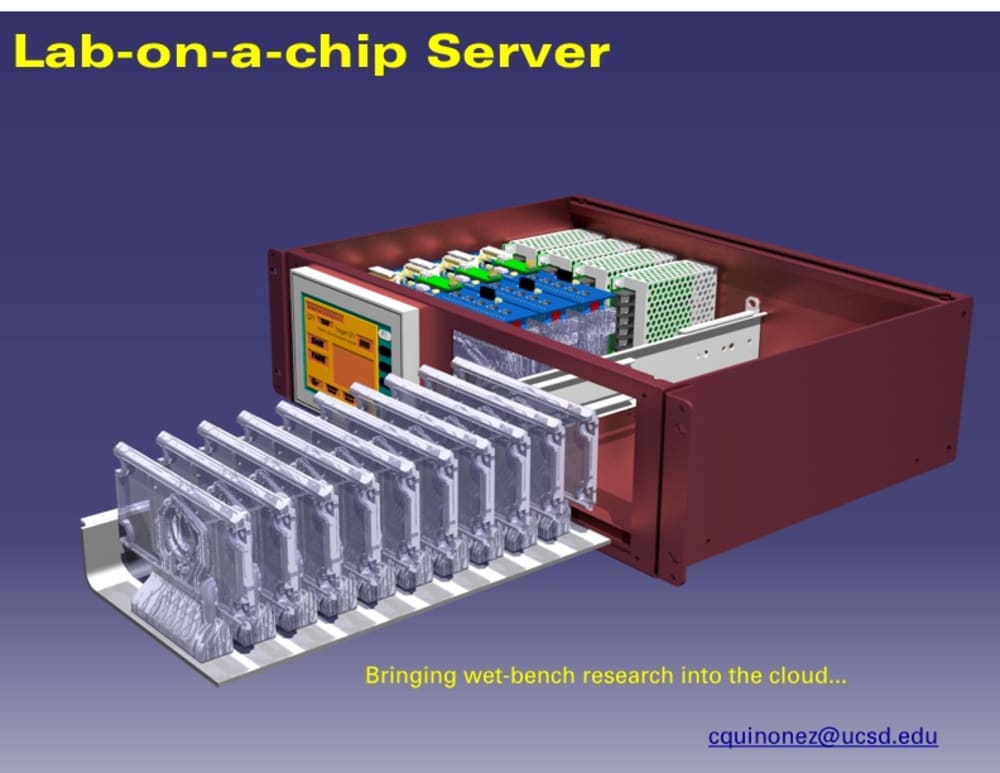Background:
If you're not familiar with a (LoaC), it's a concept that's been around for over a decade. Essentially, once the protocol for a chemistry or biology experiment has been figured out, it's possible to automate that experiment. This is exactly what big pharmaceutical companies do when they need to screen millions of compounds to find new drugs. Conventionally automating experiments unfortunately requires robotics and expensive machines, placing automation out of the reach of most individual researchers. Alternatively, it's possible to design a small silicone (like the caulk you buy at the hardware store - not the silicon that's inside your computer chips) device that's just a few inches big but can automate an entire chip. These are what researchers call a "lab-on-a-chip."
Of course, miniaturizing an experiment is not without its own difficulties. There are a lot of challenges in designing, fabricating and operating a LoaC. As researchers figure out solutions and standard ways of working with LoaCs are developed, researchers will be able to focus on their SCIENCE rather than working out the idiosyncrasies of LoaC. But the real potential of LoaC is more than giving professionals like doctors, soldiers and police the ability to carry out routine analysis themselves.
Description:
The (LoaC) server is a 3U rack-mountable instrument capable of running 36 LoaC experiments at once. Smaller bench-top versions will be capable of running fewer LoaC experiments, but will be compatible with the same chips and experiments as the rack-mount versions. Filling a small datacenter with these servers will allow running over 150,000 experiments simultaneously. Scientists can use the benchtop versions in their labs to develop and refine their experiments. When they're ready, it would be possible to send their final specifications and request as many slots as needed.
Importance:
As our knowledge of biology grows and the simple questions are answered, scientists are left to study increasing difficult and nuanced problems. This means scientists have to balance their limited resources against the complexity of their experiments. Once consequence of this has been the consolidation of research activities into larger and larger groups that can afford the machines and manpower to tackle these questions. A cloud-based infrastructure for experimentation will enable individual researchers to remain relevant in the face of this increasing complexity.
Like this entry?
-
About the Entrant
- Name:Carlo Quinonez
- Type of entry:individual
- Software used for this entry:CATIA
- Patent status:none

